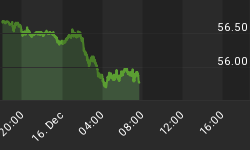Every week now for the past six months the bearish headlines on the U.S. dollar continued to flow like a mighty rushing torrent. Each month the bearishness coming from the financial press seemed to get even greater until even the most conservative commentators (most of whom were formerly pro-strong dollar) were turning sour on the buck. But now the bearish sentiment from the investment press has hit a new low. Forbes magazine has pronounced doom on the dollar in no uncertain terms. As you might guess, this sends an important contrarian message about the likely near-term path of everyone's favorite "whipping boy" currency.
Articles in major financial publications with gloom and doom headlines tend to make their appearance at market bottoms with uncanny precision. In the near-term at least, we can probably count the Forbes.com article under that heading.
The article gave voice to five so-called "prophets of doom, all of them signaling that investors should "get out of the dollar." The article asks, "Could the falling dollar mean we're in for a major financial disaster?" Peter Schiff of Euro Pacific Capital, who was quoted in the article, thinks so. He also advises selling other U.S. assets including real estate and putting money into non-dollar investments. "We are going to go through one of the most trying financial times in U.S. history," he says, "including the Great Depression."
The article quotes Schiff at length and he reels off the age-old argument about the current accounts deficit, Americans not saving enough, the U.S. being deeply into debt to the rest of the world, etc. True enough, but this has been true for a long time. Schiff seems to make the same mistake the perma-bears have been making for the past two decades, namely, focusing on the bearish super-long-term fundamentals to the exclusion of the upside momentum in the financial market, especially real estate, that has been underway for the past few years. If you'll pardon the following corruption: "Momentum covereth a multitude of financial transgressions." Yes, the dominant momentum trend doesn't care about such things as longer-term fundamentals, debt, political corruption, or current account deficits. In fact, in the near-term the market could care less about such things!
Speaking of real estate, a recent issue of the highly regarded Campbell Real Estate Timing Letter (3525 Del Mar Heights Rd., #634, San Diego, CA 92130, www.SanDiegoReal Estate Report.com), Robert Campbell (who also authored the best-selling book, "Timing the Real Estate Market," highly recommended by yours truly) writes of the latent upside momentum in the U.S. real estate market. While recognizing that there are signs of a potential peak forming in some areas of the market, he also observes that in the Southern California real estate market in particular the "tremendous upside momentum" that has developed shouldn't be ignored by the real estate bears. "...with housing prices rising 5 or 10 times as fast as household incomes -- which is a real estate P/E ratio -- the Southern California real estate market has turned into a pure momentum play -- not a value play," he says. Such also might be said of many other areas of the U.S. financial markets.

So along come the doomsayers (as highlighted in the Forbes article) proclaiming their fiery brand of doom and gloom over everything within the realm of U.S. finance. Meanwhile, the momentum uptrend is waiting in the wings for these bears to come out growling loud enough so that it might have reason to continue along its upward path. The latest round of dollar "doomsaying" is the first proverbial shot across the bough in what will undoubtedly be a progressive rise in the level of bearish sentiment against the buck in the near term.
















